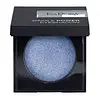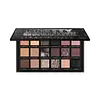What's inside
What's inside
 Key Ingredients
Key Ingredients

 Benefits
Benefits

 Concerns
Concerns

 Ingredients Side-by-side
Ingredients Side-by-side

Talc
AbrasiveMica
Cosmetic ColorantPolymethyl Methacrylate
Silica
AbrasiveDimethicone
EmollientTriethoxycaprylylsilane
Diisostearyl Malate
EmollientHexyl Laurate
EmollientCaprylyl Glycol
EmollientZinc Stearate
Cosmetic ColorantPhenoxyethanol
PreservativeHexylene Glycol
EmulsifyingHydrogenated Polyisobutene
EmollientLauroyl Lysine
Skin ConditioningTin Oxide
AbrasiveDimethicone/Vinyl Dimethicone Crosspolymer
Skin ConditioningLauryl PEG-8 Dimethicone
Aluminum Hydroxide
EmollientOctyldodecyl Stearoyl Stearate
EmollientPentaerythrityl Tetraisostearate
EmollientMagnesium Myristate
Synthetic Fluorphlogopite
Tocopherol
AntioxidantPolymethylsilsesquioxane
Calcium Sodium Borosilicate
Polysorbate 20
EmulsifyingCI 77491
Cosmetic ColorantCI 77499
Cosmetic ColorantCI 77492
Cosmetic ColorantCI 77007
Cosmetic ColorantCI 77000
Cosmetic ColorantCI 77400
Cosmetic ColorantCI 77891
Cosmetic ColorantCI 77742
Cosmetic ColorantCI 19140
Cosmetic ColorantTalc, Mica, Polymethyl Methacrylate, Silica, Dimethicone, Triethoxycaprylylsilane, Diisostearyl Malate, Hexyl Laurate, Caprylyl Glycol, Zinc Stearate, Phenoxyethanol, Hexylene Glycol, Hydrogenated Polyisobutene, Lauroyl Lysine, Tin Oxide, Dimethicone/Vinyl Dimethicone Crosspolymer, Lauryl PEG-8 Dimethicone, Aluminum Hydroxide, Octyldodecyl Stearoyl Stearate, Pentaerythrityl Tetraisostearate, Magnesium Myristate, Synthetic Fluorphlogopite, Tocopherol, Polymethylsilsesquioxane, Calcium Sodium Borosilicate, Polysorbate 20, CI 77491, CI 77499, CI 77492, CI 77007, CI 77000, CI 77400, CI 77891, CI 77742, CI 19140
Mica
Cosmetic ColorantOryza Sativa Powder
Silica
AbrasiveMagnesium Myristate
Cocoglycerides
EmollientPentaerythrityl Tetraisostearate
EmollientPropanediol
SolventDecylene Glycol
Skin ConditioningButyrospermum Parkii Butter
Skin ConditioningMagnesium Stearate
Cosmetic ColorantC10-18 Triglycerides
Emollient1,2-Hexanediol
Skin ConditioningLauroyl Lysine
Skin ConditioningCaprylhydroxamic Acid
CI 16035
Cosmetic ColorantCI 19140
Cosmetic ColorantCI 75470
Cosmetic ColorantUltramarines
Iron Oxides
CI 77510
Cosmetic ColorantCI 77742
Cosmetic ColorantTitanium Dioxide
Cosmetic ColorantSynthetic Fluorphlogopite
Hydrogenated Polyisobutene
EmollientDimethicone
EmollientCalcium Aluminum Borosilicate
Zinc Stearate
Cosmetic ColorantTrimethylsiloxysilicate
EmollientEthylene/Propylene/Styrene Copolymer
Tin Oxide
AbrasiveButylene/Ethylene/Styrene Copolymer
Pentaerythrityl Tetra-Di-T-Butyl Hydroxyhydrocinnamate
AntioxidantKaolin
AbrasiveOctyldodecyl Stearoyl Stearate
EmollientPolyglyceryl-3 Diisostearate
EmulsifyingPhenyl Trimethicone
Skin ConditioningPolyhydroxystearic Acid
EmulsifyingCI 77266
Cosmetic ColorantDiisostearyl Malate
EmollientStearyl Dimethicone
EmollientEthylhexylglycerin
Skin ConditioningHydrogenated Ethylhexyl Olivate
EmollientCalcium Sodium Borosilicate
Octyldodecanol
EmollientCetearyl Ethylhexanoate
EmollientSimmondsia Chinensis Seed Oil
EmollientHydrated Silica
AbrasivePolybutene
Dodecane
PerfumingC30-45 Alkyl Dimethicone
Skin ConditioningPhenylisopropyl Dimethicone
Skin ConditioningHydrogenated Vegetable Oil
EmollientTriethylhexanoin
MaskingSucrose Acetate Isobutyrate
Coconut Alkanes
EmollientHydrogenated Olive Oil Unsaponifiables
EmollientDisteardimonium Hectorite
StabilisingCetyl PEG/PPG-10/1 Dimethicone
EmulsifyingEthylhexyl Polyhydroxystearate
EmollientPropylene Carbonate
SolventSorbitan Sesquioleate
EmulsifyingNeopentyl Glycol Diethylhexanoate
EmollientDimethiconol
EmollientDimethicone/Vinyl Dimethicone Crosspolymer
Skin ConditioningCoco-Caprylate/Caprate
EmollientHelianthus Annuus Seed Oil
EmollientTocopherol
AntioxidantBeta-Sitosterol
Emulsion StabilisingSqualene
EmollientCI 77000
Cosmetic ColorantEthylhexyl Palmitate
EmollientCaprylic/Capric Triglyceride
MaskingHydrogenated Styrene/Butadiene Copolymer
Tris-BHT Mesitylene
AntioxidantSynthetic Wax
AbrasiveDibutyl Lauroyl Glutamide
Skin ConditioningDibutyl Ethylhexanoyl Glutamide
Skin ConditioningMica, Oryza Sativa Powder, Silica, Magnesium Myristate, Cocoglycerides, Pentaerythrityl Tetraisostearate, Propanediol, Decylene Glycol, Butyrospermum Parkii Butter, Magnesium Stearate, C10-18 Triglycerides, 1,2-Hexanediol, Lauroyl Lysine, Caprylhydroxamic Acid, CI 16035, CI 19140, CI 75470, Ultramarines, Iron Oxides, CI 77510, CI 77742, Titanium Dioxide, Synthetic Fluorphlogopite, Hydrogenated Polyisobutene, Dimethicone, Calcium Aluminum Borosilicate, Zinc Stearate, Trimethylsiloxysilicate, Ethylene/Propylene/Styrene Copolymer, Tin Oxide, Butylene/Ethylene/Styrene Copolymer, Pentaerythrityl Tetra-Di-T-Butyl Hydroxyhydrocinnamate, Kaolin, Octyldodecyl Stearoyl Stearate, Polyglyceryl-3 Diisostearate, Phenyl Trimethicone, Polyhydroxystearic Acid, CI 77266, Diisostearyl Malate, Stearyl Dimethicone, Ethylhexylglycerin, Hydrogenated Ethylhexyl Olivate, Calcium Sodium Borosilicate, Octyldodecanol, Cetearyl Ethylhexanoate, Simmondsia Chinensis Seed Oil, Hydrated Silica, Polybutene, Dodecane, C30-45 Alkyl Dimethicone, Phenylisopropyl Dimethicone, Hydrogenated Vegetable Oil, Triethylhexanoin, Sucrose Acetate Isobutyrate, Coconut Alkanes, Hydrogenated Olive Oil Unsaponifiables, Disteardimonium Hectorite, Cetyl PEG/PPG-10/1 Dimethicone, Ethylhexyl Polyhydroxystearate, Propylene Carbonate, Sorbitan Sesquioleate, Neopentyl Glycol Diethylhexanoate, Dimethiconol, Dimethicone/Vinyl Dimethicone Crosspolymer, Coco-Caprylate/Caprate, Helianthus Annuus Seed Oil, Tocopherol, Beta-Sitosterol, Squalene, CI 77000, Ethylhexyl Palmitate, Caprylic/Capric Triglyceride, Hydrogenated Styrene/Butadiene Copolymer, Tris-BHT Mesitylene, Synthetic Wax, Dibutyl Lauroyl Glutamide, Dibutyl Ethylhexanoyl Glutamide
Ingredients Explained
These ingredients are found in both products.
Ingredients higher up in an ingredient list are typically present in a larger amount.
Calcium Sodium Borosilicate is a bulking agent. It is considered a borosilicate glass; it is composed of powder or flakes of calcium and sodium borosilicates.
This ingredient is used to add volume, shine, and color to products. You'll most likely find this ingredient in makeup products.
According to in-vivo and ex-vivo studies done by a manufacturer, this ingredient works well with UV filters:
Learn more about Calcium Sodium BorosilicateCI 19140 is also known as Tartrazine. Tartrazine is a synthetic dye used in cosmetics, foods, and medicine to add a yellow color.
Tartrazine is created from petroleum and is water-soluble.
Some people may experience allergies from this dye, especially asthmatics and those with an aspirin intolerance.
Learn more about CI 19140We don't have a description for CI 77000 yet.
This ingredient is used to add a violet color to cosmetics.
It is created by reacting phosphoric acid, ammonium dihydrogen orthophosphate, and manganese dioxide.
Diisostearyl Malate is an emollient and most often used in lip products. It comes from isostearyl alcohol, a fatty acid, and malic acid, an AHA.
As an emollient, Diisostearyl Malate helps create a thin film on your skin to trap moisture in. This helps keep your skin soft and smooth.
Dimethicone is a type of synthetic silicone created from natural materials such as quartz.
What it does:
Dimethicone comes in different viscosities:
Depending on the viscosity, dimethicone has different properties.
Ingredients lists don't always show which type is used, so we recommend reaching out to the brand if you have questions about the viscosity.
This ingredient is unlikely to cause irritation because it does not get absorbed into skin. However, people with silicone allergies should be careful about using this ingredient.
Note: Dimethicone may contribute to pilling. This is because it is not oil or water soluble, so pilling may occur when layered with products. When mixed with heavy oils in a formula, the outcome is also quite greasy.
Learn more about DimethiconeThis ingredient is a silicone used to improve the texture of products and absorb oil. It does not get absorbed into the skin.
Like other silicones, Dimethicone/Vinyl Dimethicone Crosspolymer helps condition the skin by creating a barrier. In this sense, it can act as an emollient and trap moisture in.
This ingredient is a type of elastomer.
Learn more about Dimethicone/Vinyl Dimethicone CrosspolymerHydrogenated Polyisobutene is a synthetic polymer. Polymers are compounds with high molecular weight. Hydrogenated Polyisobutene is an emollient and texture enhancer.
In one study, Hydrogenated Polyisobutene showed better skin hydration levels than Caprylic/Capric Triglyceride. As an emollient, it helps keep your skin soft and hydrated by trapping moisture in.
Hydrogenated Polyisobutene is often used as a mineral oil replacement.
Learn more about Hydrogenated PolyisobuteneThis ingredient comes from a fatty acid (lauric acid) and amino acid (lysine). It is used to add a silky feel to cosmetics.
According to a manufacturer, its fatty acid base leaves a silky feeling on the skin. It also has emollient properties because of this. Emollients help soften skin by preventing water from evaporating.
Lauroyl lysine is barely soluble in water.
Learn more about Lauroyl LysineWe don't have a description for Magnesium Myristate yet.
Mica is a naturally occurring mineral used to add shimmer and color in cosmetics. It can also help improve the texture of a product or give it an opaque, white/silver color.
Serecite is the name for very fine but ragged grains of mica.
This ingredient is often coated with metal oxides like titanium dioxide. Trace amounts of heavy metals may be found in mica, but these metals are not harmful in our personal products.
Mica has been used since prehistoric times throughout the world. Ancient Egyptian, Indian, Greek, Roman, Aztec, and Chinese civilizations have used mica.
Learn more about MicaOctyldodecyl Stearoyl Stearate is created from stearic acid.
It is an emollient and thickens the lipid (oil) portion of a product. Due to its emollient properties, it may not be fungal-acne safe.
Pentaerythrityl Tetraisostearate is derived from isostearic acid. It is an emollient and emulsifier.
The highest concentration of this ingredient is found in lipsticks.
This ingredient is minimally water soluble and may not be Malassezia folliculitis, or fungal-acne safe.
Learn more about Pentaerythrityl TetraisostearateSilica, also known as silicon dioxide, is a naturally occurring mineral. It is used as a fine, spherical, and porous powder in cosmetics.
Though it has exfoliant properties, the function of silica varies depending on the product.
The unique structure of silica enhances the spreadability and adds smoothness, making it a great texture enhancer.
It is also used as an active carrier, emulsifier, and mattifier due to its ability to absorb excess oil.
In some products, tiny microneedles called spicules are made from silica or hydrolyzed sponge. When you rub them in, they lightly polish away dead skin layers and enhance the penetration of active ingredients.
Learn more about SilicaSynthetic Fluorphlogopite is the synthethic version of mica. It consists of fluorine, aluminum and silicate.
Synthetic Fluorphlogopite is used to add volume to products.
It is considered non-irritating on the skin.
Learn more about Synthetic FluorphlogopiteTin Oxide is an inorganic oxide used to add opacity and volume to a product. In nature, it is already found in mineral form. The main ore of tin is an opaque and shiny mineral called casseterite.
Tin Oxide helps remove translucency in a product, or make it more opaque. Besides adding opacity, tin oxide is used for bulking to add volume.
Tocopherol (also known as Vitamin E) is a common antioxidant used to help protect the skin from free-radicals and strengthen the skin barrier. It's also fat soluble - this means our skin is great at absorbing it.
Vitamin E also helps keep your natural skin lipids healthy. Your lipid skin barrier naturally consists of lipids, ceramides, and fatty acids. Vitamin E offers extra protection for your skin’s lipid barrier, keeping your skin healthy and nourished.
Another benefit is a bit of UV protection. Vitamin E helps reduce the damage caused by UVB rays. (It should not replace your sunscreen). Combining it with Vitamin C can decrease sunburned cells and hyperpigmentation after UV exposure.
You might have noticed Vitamin E + C often paired together. This is because it is great at stabilizing Vitamin C. Using the two together helps increase the effectiveness of both ingredients.
There are often claims that Vitamin E can reduce/prevent scarring, but these claims haven't been confirmed by scientific research.
Learn more about TocopherolZinc Stearate is the metal salt of stearic acid. It is a white solid used to bind, thicken, and lubricate products.
This ingredient is common in powder makeup, where it helps keep the powder together.
Zinc Stearate is hydrophobic and repels water.
This ingredient can be sourced from non-animal or animal sources. It is best to reach out to the brand to see where they source this ingredient from.
Learn more about Zinc Stearate